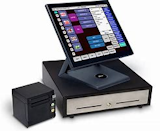
In the fast-paced world of restaurants, efficiency is key. From taking orders swiftly to managing inventory seamlessly, the right Point of Sale (POS) system can make all the difference. However, one of the most common questions that arise when considering a restaurant POS system is: How much does it cost? The answer to this question isn't straightforward, as the cost can vary depending on several factors. In this article, we'll delve into the various components that contribute to the cost of a restaurant POS system, helping you make an informed decision for your business.
Understanding the Basics of Restaurant POS Systems
Before diving into the cost breakdown, let's first understand what a restaurant POS system entails. A restaurant POS system is more than just a cash register. It's a comprehensive solution designed to streamline various operations within a restaurant, including order processing, payment processing, inventory management, employee scheduling, and reporting.
Factors Influencing the Cost
- Hardware Costs: The hardware components of a restaurant POS system include terminals, tablets, card readers, printers, and kitchen displays. The cost of these hardware items can vary significantly depending on the quality, brand, and quantity needed for your restaurant.
- Software Fees: The software is the backbone of any POS system. The pricing model for POS software can vary, ranging from one-time licensing fees to monthly subscription plans. Some software providers offer tiered pricing based on the features and functionalities you require, while others may charge additional fees for add-ons or customization.
- Installation and Setup: Setting up a restaurant POS system involves installation, configuration, and training for your staff. While some POS providers offer free installation and setup as part of their package, others may charge a one-time fee or hourly rates for these services.
- Payment Processing Fees: Most POS systems integrate with payment processors to facilitate transactions. Payment processing fees typically include a combination of interchange fees, assessment fees, and markup fees charged by the payment processor. It's essential to understand these fees and negotiate competitive rates to minimize costs.
- Additional Features and Integrations: Depending on your restaurant's specific needs, you may require additional features such as online ordering, tableside ordering, loyalty programs, or integration with third-party services like accounting software or delivery platforms. These add-ons may incur additional costs, either as one-time fees or recurring charges.
- Maintenance and Support: Ongoing maintenance and support are crucial for ensuring the smooth operation of your POS system. Some providers offer 24/7 customer support as part of their service, while others may charge extra for extended support or on-site assistance.
Cost Breakdown
Now that we've identified the key factors influencing the cost let's break down the average costs associated with restaurant POS systems:
- Hardware Costs: Depending on the size of your restaurant and the number of terminals needed, hardware costs can range from a few hundred to several thousand dollars per terminal.
- Software Fees: Monthly subscription fees for POS software typically range from $50 to $200 per terminal. Some providers may offer discounts for annual subscriptions or charge additional fees for advanced features.
- Installation and Setup: Installation and setup fees can range from $500 to $2,000 or more, depending on the complexity of the installation and the level of customization required.
- Payment Processing Fees: Payment processing fees typically range from 1.5% to 3.5% of each transaction's total value, plus a flat fee per transaction (e.g., $0.10 to $0.30).
- Additional Features and Integrations: The cost of additional features and integrations can vary widely depending on the provider and the specific requirements of your restaurant. Expect to pay anywhere from a few hundred to several thousand dollars for add-ons and integrations.
- Maintenance and Support: Maintenance and support fees are usually included in the monthly subscription cost for POS software. However, some providers may offer premium support plans or charge hourly rates for on-site assistance.
Conclusion
In conclusion, the cost of a restaurant POS system can vary depending on several factors, including hardware costs, software fees, installation and setup, payment processing fees, additional features and integrations, and maintenance and support. It's essential to carefully evaluate your restaurant's needs and budget constraints before selecting a POS system. Additionally, don't forget to factor in the long-term costs associated with ongoing maintenance, support, and payment processing fees. By understanding the various components that contribute to the cost of a POS system, you can make an informed decision that aligns with your restaurant's goals and budget.
